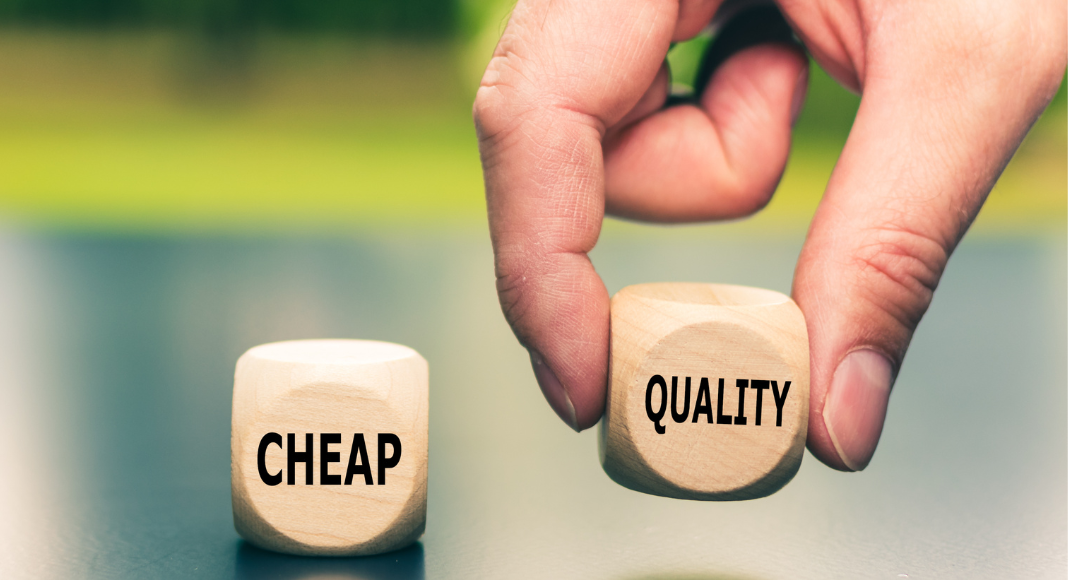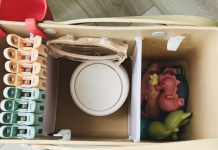School feels like it just ended, but in my household, we are preparing for the next school year! We need to think about supplies, backpacks, lunch boxes, new clothes, the list goes on!
One tip I would like to share with you as we prepare for Back to School is to buy better quality items — aka buy the more expensive option.
 A Lesson for Shopping
A Lesson for Shopping
On my podcast Money CHIC, my co-host and I were talking about how “cheaping out” when shopping can actually cost you more in the end. The example that sealed the deal for me was Pottery Barn lunch boxes.
We are proud to be a “Packer” family. My kids pack their lunches nearly every day, so our lunch boxes take a beating and we have burned through our fair share of them. When my oldest daughter started school, I would go to the Pottery Barn website and browse the cute backpacks and matching lunch boxes. I could not get over the $35 price tag for a lunch box!
Instead, I would buy her an inexpensive, insulated lunch bag from Target and be proud of myself that I resisted the expensive temptation. Inevitably, halfway through the year the insulation would rip, get a little musty from not being able to dry fully and end up in the trash. Back to Target, we go! This cycle continued for more years than I would like to admit.
A few years ago, I decided I am going to pony up the $35 for a PB Kid lunchbox. (But I am not paying $10 to have her name embroidered!) Although my daughter has outgrown princesses, this lunch box is now being used by her little sister and has many more years of life in it. Spending more upfront has actually saved me and continues to save me a lot of money for years. Keep my story in mind when you’re Back to School shopping or just shopping in general.
 The Case to Buy More Expensive Versions of Products
The Case to Buy More Expensive Versions of Products
When it comes to buying the expensive version of an item instead of the cheap version, there are a few factors to consider. While it’s often tempting to opt for the cheaper option to save money upfront, there are instances where investing in a higher-quality, more expensive item can be beneficial in the long run. Here are some points to think about:
1. Quality and Durability
Expensive items often come with higher quality and better durability. They are typically made from superior materials and undergo more stringent manufacturing processes. This means they are less likely to break or wear out quickly, resulting in a longer lifespan. By investing in a durable item, you may end up saving money in the long run by not having to replace it as frequently.
2. Performance and Functionality
In certain cases, expensive versions of products offer better performance and enhanced functionality. This can be especially true for electronics, appliances, and tools. While cheaper alternatives might provide the basic features, higher-end options may offer advanced capabilities, increased efficiency, or additional features that improve your overall experience and productivity.
3. Warranty and Customer Support
Expensive items often come with better warranty coverage and customer support. Manufacturers of higher-priced products tend to offer longer warranty periods and better customer service, ensuring that you’re covered if any issues arise. This peace of mind can be valuable, particularly for big-ticket items or items that you rely on daily.
4. Long-term Cost-effectiveness
Although the upfront cost of an expensive item may be higher, it’s essential to consider long-term cost-effectiveness. Higher-quality products often require less maintenance, repairs, and replacement parts, which can save you money over time. Additionally, some expensive items are designed with energy efficiency in mind, leading to reduced utility bills or lower maintenance costs.
5. Personal Preferences and Satisfaction
Sometimes, opting for the more expensive version of an item aligns with your personal preferences or brings you greater satisfaction. Whether it’s a luxury item, a brand you trust, or a product with unique design elements, the added cost may be worth it if it enhances your overall enjoyment and fulfillment.
Making the Decision
It’s important to note that not all expensive items are necessarily better than their cheaper counterparts. In some cases, the price difference may not be justified by significant differences in quality or functionality. It’s crucial to research and read reviews to determine if the higher-priced item truly offers tangible benefits and value.
Ultimately, the decision to buy the expensive version of an item depends on your specific needs, budget, and priorities. Consider the factors mentioned above, weigh the pros and cons, and make an informed decision that aligns with your circumstances.













